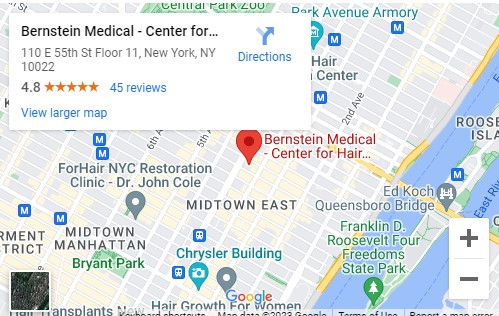January 12th, 2007
Q: First off thank you for providing this Blog, it is extremely informative and gives people the opportunity to ask questions of one of the most knowledgeable hair transplant surgeons in the world. You are considered the consummate researcher in the field of hair loss, so I ask this question of you. It appears that all the current hair loss drugs, at one point or another, begin to lose their effectiveness. Have you ever entertained the idea of cycling these drugs, or reducing the dosage for a period of time, to prevent the body from becoming acclimated to these drugs and subsequently making adjustments to receptors causing this? This method is commonly used by bodybuilders and others in the sports profession to elicit the maximum effect from the drugs they employ. Though I have not found any studies along these lines, I believe there are valid reasons why this may work. I hope you may be able to share any information on this subject. — Z.Z., Chicago, I.L.
A: Excellent question. I can answer it only indirectly.
It has been our experience that when you discontinue finasteride (Propecia), or decrease the dose to a degree that it no longer works, the patient will begin to shed hair. When the drug is re-started or the dose increased again, the medications will begin working, but the patient now maintains his hair at a lower baseline. He doesn’t seem to regain the amount of hair he has before the medication was stopped. For this reason, we don’t stop and start finasteride. The same argument applies to dutasteride, although we have less experience with this medication. This experience would speak against using pulse therapy for hair loss.
On the other hand, the hair loss medications finasteride and dutasteride do not necessarily need to be used once a day. Although the serum half-life of finasteride is around 6 hours, the tissue half-life is felt to be around two days. Therefore, alternate day dosing with 2 mg of finasteride (or approx. 1/2 of a 5mg tablet) should work just as well as 1mg a day. An average daily dose of less than 1mg, however, does not seem to be as effective. Dutasteride has a half-life of 5 weeks and is found to bind to scalp tissue for many months, so with dutasteride, a dosing of even once a week will most likely be just as effective as once a day.


 Bernstein Medical – Center for Hair Restoration has moved to a new, state-of-the-art facility in mid-town Manhattan. The office is centrally located in the Park 55 building at 110 East 55th Street.
Bernstein Medical – Center for Hair Restoration has moved to a new, state-of-the-art facility in mid-town Manhattan. The office is centrally located in the Park 55 building at 110 East 55th Street.


